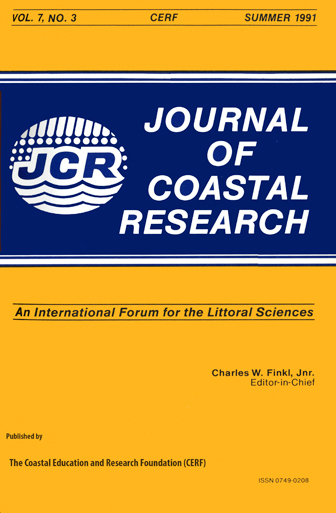Distinguishing Sand Facies in the Nile Delta, Egypt, by Stained Grain and Compositional Component Analyses
Keywords:
Beach facies, coastline evolution, coastal dune, lagoonal sand, nearshore sand, petrography of sand, River Nile sand, sea level changeAbstract
Counts of stained grains and of compositional components serve to simply and rapidly, yet reliably, distinguish sand facies in different modern environments of the Nile delta in Egypt. River lagoon, beach, and marine nearshore sands are characterized by distinct petrographic attributes, and each facies is readily differentiated from each other and from modern desert sands. Less clearly defined are coastal dune sands which present compositional characteristics that overlap with those of marine nearshore and beach facies. Additional measurements, including textural analyses, proportions of specific heavy minerals and/or identification of surface textures on quartz grains can help discriminate coastal dune, nearshore, and beach sands. The stained grain and compositional component method is applied to the study of subsurface sand facies. In this investigation, it is used to help determine the origin of sands of late Pleistocene to Holocene age recovered in Nile delta core sections. This approach is particularly helpful to interpret sand strata whose primary structures and original textures have been modified and/or altered during drilling, and/or whose chronostratigraphic position in core sections is unknown or poorly defined. Improved definition of sand facies enhances stratigraphic correlations and, in turn, our understanding of how the evolution of fluvio-deltaic sequences relates to migration of distributary branches of the River Nile, to progradation and/or erosion of the coast, and to eustatic changes in sea level and subsidence.


